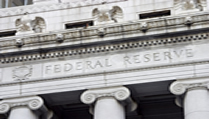 In postponing implementation of a program to have banks do yearly stress tests, the Fed put away temporarily one of its most stringent bank regulatory weapons. That’s because many observers see the stress tests as a form of unrestrained regulation.
In postponing implementation of a program to have banks do yearly stress tests, the Fed put away temporarily one of its most stringent bank regulatory weapons. That’s because many observers see the stress tests as a form of unrestrained regulation.
For treasurers, they should expect continued distraction at banks as they continue to gear up for the stress tests despite the delay.
In December 2011 the Fed proposed requiring “all bank holding companies and state member banks with more than $10 billion in total consolidated assets” to conduct an “annual company-run stress test beginning on the effective date of the final rule.” But some saw “stress tests” as more a control mechanism to control banks’ lending and trading practices. According to an attorney and banking expert who spoke at The NeuGroup’s Bank Treasurers’ Peer Group (BTPG) the spring, the stress tests give regulators a means to govern capital requirements and the capital targets of Basel III, and a whole lot more.
They also represent an entirely new system to the regulatory process, this attorney said, not just supervision but regulation by supervision. With regulation by supervision there is very little due process: with the stress tests, for example, there has been no voting or proposed rulemaking process (with due process akin to notice of proposed rulemakings or NPRs), just unfettered discretion by the Fed.
The delay is likely a small blow to Fed Governor Daniel Tarullo, who has taken that “unfettered discretion” and run with it. Over the past few years, Mr. Tarullo has worked to raise capital standards for the largest banks, and has pushed hard for the annual stress tests. But many bankers, particularly the smaller ones, have been concerned about the size of the effort needed to get the stress tests going.
“A number of commenters on the proposal raised concerns about the proposed timing of compliance with the company-run stress test requirements, specifically questioning if all institutions would have the resources, readiness, and ability to conduct stress tests given the likely short period between publication of a final rule and the start of the stress testing process,” the Fed said in a statement.
Another concern voiced at the BTPG was the stress tests would be a damper on bank M&A. The suggestion was that if you are an $8bn bank you will now think twice about a merger or acquisition that bumped you over the $10bn mark.
Although many members of The NeuGroup’s BTPG have begun the stress tests, they complain that the effort – at least at the beginning – does require a lot of resources; they also complain that the test assumptions change from year to year and that they have little access – even through the regional Fed banks – to the stress test creators. One member of the group said he was spending so much time on capital stress testing that he was losing sight of what was happening on the liquidity front and where to make money in a low interest rate environment.
For the most part, the Fed and Mr. Tarullo’s hard line has helped tighten credit conditions for only the highest-quality credits; this at a time when the economy is posting only moderate growth. And with the delay there will be uncertainty, not to mention banks prepping their stress tests mechanisms (or conducting practice runs on their own), so it is expected that these tightened credit conditions will continue.